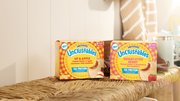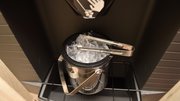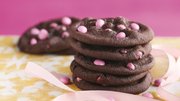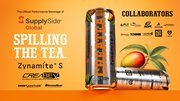Blog
Some Like It Hot -- But Its Good Cold And Mixed Too
December 20, 2015 | Kevin Daw
TAGS: Vending Times columnist, vending, office coffee service, OCS editorial, coffee industry, coffee market, coffee roasting, Heritage Coffee, Kevin Daw |
It was wonderful to see so many familiar faces at the recently wrapped up Coffee, Tea & Water show. I love to reacquaint with old friends and meet a few new ones, and every show reaffirms how awesome our industry players really are.
This month I want to look to the future in coffee (a conference about coffee will always get one's mind thinking in that forward direction). I'm not talking about current trends such as a new resurgence in coffee pods -- actual pods, you know; the round paper kind, and whole-bean grind-and-brew single cup units, of which there were many to be seen at the show. Rather I want to examine and discuss what the folks on the specialty drink side of coffee are up to, as we will likely see and want to incorporate one or more of these in office coffee service, too, to create those hard to get, but much-welcomed added-value dollars on the bottom line.
 |
SPECIALTY TRENDS: Kegs, tonics, green extracts and artisinal water can enhance specialty coffee options. |
Some new trends will likely be difficult to virtually impossible to pull off in an office environment, but I can see a situation in which the Google Campus will be satisfied only if their service provider is willing to install a few coffee taps for some refreshing coffee drafts.
So let's dig in. And since I brought it up already, how about starting with the vaunted icy draft coffee?
Draft coffee. It is also called nitrogen-brewed coffee, and is exactly what it sounds like: coffee stored in kegs in pre-brewed form, kept refrigerated and pulled from a tap just like its sudsy cousin, beer.
It actually works, it's actually not bad, and next-geners have a good chance of embracing it as something all their own that sets them apart from mom and dad. This sounds far out, on the surface, but while dwelling on it I came to the conclusion that some inventive roaster realized that since nitrogen is already used in the packing of fraction-packs to lock in freshness and retard staling, this might be a great concept for ready-to-serve coffee. Since the concept already existed in beer, the leap was short indeed, and a new style of coffee was born. It can actually be found and bought online, should you wish to try for yourself.
Coffee tonics (also referred to as Tonic Americanos). This is just as it sounds, too, a long pull of espresso poured over a glass of tonic water and ice. There are obviously going to be many variations to this, in terms of the espresso that's used, how long a shot of that espresso is mixed with how much tonic, which exact tonic, how much ice to tonic -- well, you see where I'm going. This one could be as easy to offer clients as installing an espresso unit and selling them the tonic water of their choice. There could easily be trouble in ensuring a consistent beverage aligned with your intended profile, but this is certainly easy to try for yourself. Think complementary "citrusy" characteristics that, when done correctly, can improve on the espresso experience without drowning it in milk.
Green coffee extract. Starbucks has popularized this concept with its "refreshers" line of green coffee extract beverages.
Doing this yourself, or trying to offer a ready-to-brew option with green coffee, is tricky, as the extraction or "steep" time can be lengthy, especially when using whole beans. With whole beans, we are talking about letting the beans extract in water overnight, then bringing it to a boil and reducing that to a simmer for at least 15 minutes. It's complicated and time-consuming. Grinding green coffee, which is far more dense and contains more moisture than roasted beans, is a process requiring heavy-duty equipment, but the steep time is greatly reduced. For those who believe in the possible health benefits the resultant beverage confers, green-coffee extract is a segment worth a look, with a possible future upside, should more studies find it to be everything it's said to be.
Water. Yes, there may well be more focus on the water portion of our beverage. As roughly 98% of a brewed cup of coffee, water is certainly critical, but often receives only some attention rather than the great diligence and promotion it deserves.
Some specialty folks are trying ways to set themselves apart by using "artisanal" waters; as mentioned earlier, tonic waters; infused waters; and unique mineral waters. I even read of one coffeehouse operator considering coffee "flights" that would serve up coffee brewed with three different artisanal waters.
This doesn't sound like it would translate to the breakroom, but I do believe that when operators are looking for ways to set themselves apart -- as their specialty brethren continuously struggle to do -- water may "well" be worth contemplating.
Whichever of these new concepts you do or don't choose to incorporate into your lineup, may your cup run full and the brew be exquisite.
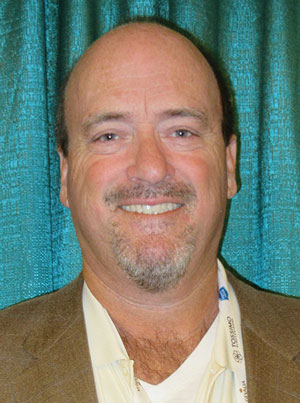 KEVIN DAW is president of Heritage Coffee Co. (London, ON, Canada), a private-label roaster serving the breaktime management industries. A 30-year veteran of OCS, water delivery and vending operations, he has concentrated on coffee roasting for the past two decades.
KEVIN DAW is president of Heritage Coffee Co. (London, ON, Canada), a private-label roaster serving the breaktime management industries. A 30-year veteran of OCS, water delivery and vending operations, he has concentrated on coffee roasting for the past two decades.